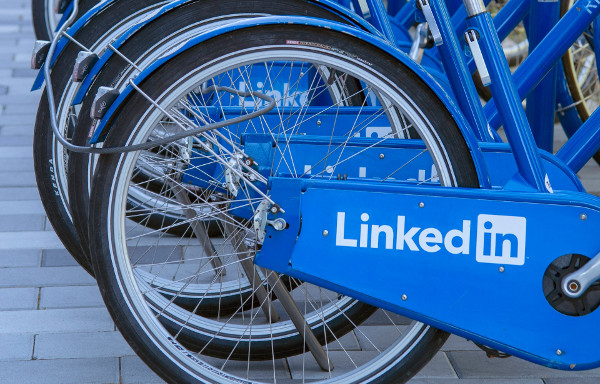If I have a guiding principle in digital marketing, it’s this: Quality content wins.
It’s quality content, not “hacks,” that helps prospects know, like and trust you and your business.
That said, I am not above using “hacks” in an ethical way to get the most out of a marketing campaign.
And since I believe LinkedIn has become a smart place for many businesses to build and engage a following, I was especially interested to listen to LinkedIn expert Samantha McKenna on a recent episode of Kathleen Booth’s Inbound Success podcast.
In it, McKenna listed three “hacks” that will help you reach more people on LinkedIn.
1. Put the Link in the Comments
One of the most common types of posts published in LinkedIn is a link to an article or blog with a short description and the link. And that’s a mistake.
Posts that contain a link show up less often in the feed, McKenna says, because LinkedIn doesn’t want users clicking them and leaving the platform.
“You’ll get about 10 to 15 percent of the normal visibility” if you include the link in the post itself, she says.
That doesn’t mean you shouldn’t share content from your site — or other websites — on LinkedIn. Just do it the way McKenna recommends: Write your post and let readers know the link will be in the comments — then paste the link in the comments as soon as you publish the post.
Using this method, you lose the preview image, as well, and images do help visibility. So McKenna recommends adding an image to the post manually before publishing.
2. Entice Readers to ‘See More’
When a post runs longer than about 140 characters*, LinkedIn truncates it and adds a “… see more” link that users must click to read the whole thing. That might seem annoying, but when users click that link, they’re sending a signal to LinkedIn that the post is interesting. You can use that to your advantage.
How? Make your first 120 to 130 characters intriguing, perhaps by asking a question that you answer further down, or by adopting (ethical) “clickbait” practices you see on sites like Buzzfeed (“You won’t believe … “). You want readers to feel an urge to click “…see more.”
Here’s an example from my feed that was effective recently:

The more people who click “… see more,” the more visible your post will be on the platform.
* – It’s about 140 characters on mobile. You can get about 230 characters in before the “… see more” link on the desktop. But since mobile is so important, I’d suggest crafting an enticing introduction in about 120-130 characters, and then hit “enter.” That should work on both platforms — but sometimes it takes some trial and error.
3. Don’t Use the “Share” Button
When you see great content on LinkedIn, the kind your connections would value, the smart thing to do is click the share button, add a comment and post it, right? It’s quick and it preserves the “integrity” of the original post.
Wrong. As McKenna says, “When you do that, what you’re actually telling LinkedIn is, ‘I’m repurposing old content. There’s nothing new to see here.’ And again, LinkedIn will throttle that post about 10 to 15 percent of the normal views.”
So she suggests you grab the link in the original post, write a new post yourself, and put the link in the comments, as described in Tip 1 above.
I’ve been using all three of McKenna’s tips for a few weeks now, and my posts do seem to be getting more engagement. Try them out yourself and see.
And if you want to dig deeper into using LinkedIn to grow your business, I recommend the entire podcast episode, which also includes tips on using LinkedIn’s paid Sales Navigator tool for sales prospecting and marketing.

